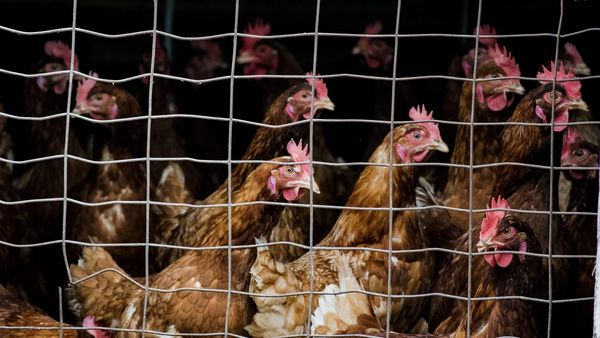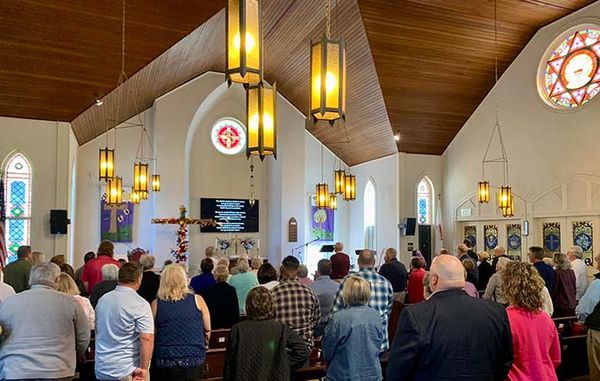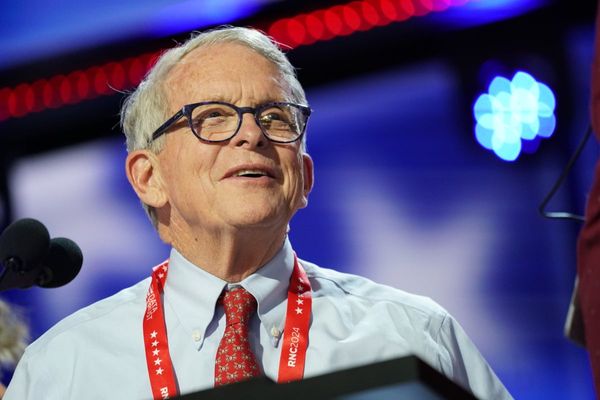Federal Reserve Chair Jerome Powell's annual Jackson Hole, Wyo., speech on Friday laid out three tests that incoming data will have to meet to avert additional rate hikes. On Tuesday, the Job Openings and Labor Turnover survey passed Powell's test with flying colors, as job openings slid to the lowest level in more than two years. The S&P 500 surged as the 10-year Treasury yield dived on Tuesday.
Next up: The Fed's primary inflation rate, the PCE price index, is out Thursday at 8:30 a.m., followed by the August jobs report on Friday morning.
On Wednesday morning, payroll processor ADP estimated that private-sector firms added 177,000 jobs in August, the lowest since March. That's still more than the 147,000 private-sector job gain anticipated in Friday's report. However, ADP estimates don't closely track Labor Department data on a month-to-month basis.
After the ADP employment report, S&P 500 futures pointed slightly higher in early Wednesday stock market action.
Job Openings Fall
The Labor Department reported that posted job openings fell 338,000 in July to 8.8 million. That's the lowest since March 2021, before inflation got carried away to the upside. June data was revised down sharply to 9.165 million from an initially reported 9.582 million.
Meanwhile the quits rate, the percentage of workers quitting their job in a given month, slipped to 2.3%, the lowest since January 2021. The quits rate peaked at 3%. It hasn't been lower than 2.3% since Sept. 2020. It's fair to say that the so-called "Great Resignation," which helped push up wage growth, is over.
The quits rate is now in line with the 2.3%-2.4% range that prevailed before the pandemic in an era of low inflation.
"The labor market is largely back to pre-pandemic conditions," wrote ZipRecruiter chief economist Julia Pollak. The cooling conditions "will come as a relief to many employers," she added.
The Conference Board's Consumer Confidence survey reinforced the return to more normal conditions. The percentage of respondents who see jobs as "plentiful" fell to 40.3% in August from 43.7%. Meanwhile, those saying jobs are "hard to get" rose to 14.1% from 11.3%. The differential fell to 26.2%, which is 6 percentage points below the February 2020 reading, noted Barry Knapp of Ironsides Macroeconomics.
Still, by one of Powell's favorite measures, the labor market isn't quite back to its pre-pandemic norm. There are still 1.5 unemployed workers for every job opening, with 3 million fewer unemployed persons than job openings. The ratio of unemployed workers to job openings peaked at 1.2 before the pandemic.
Fed Rate-Hike Odds Fall
Powell devoted much of his Friday speech to the upside risk for inflation. That was a change from the balanced tone he struck on July 26, after the Fed's most recent rate hike. "We're coming to a place where there really are risks on both sides," Powell had said.
Powell's more hawkish tilt comes amid "signs the economy may not be cooling as expected." He cited recent strength in consumer spending, above-trend GDP growth and a pickup in housing activity from depressed levels.
The Fed chair didn't go so far as to suggest that more rate hikes are likely, but made clear that the status quo won't suffice. The upshot: The economy needs to cool down pretty quickly because the Fed is low on patience.
Odds for a rate hike by the Nov. 1 meeting climbed to 62% on Monday, but have since tumbled back to 41% amid evidence of labor market cooling, according to the CME FedWatch Tool.
Powell's Three Tests For Economic Data
Here are Powell's three tests to keep in mind when reviewing this week's batch of data.
"Additional evidence of persistently above-trend growth could put further progress on inflation at risk and could warrant further tightening of monetary policy," Powell said.
He added: "Evidence that the tightness in the labor market is no longer easing could also call for a monetary policy response."
Powell also continued to place emphasis on inflation in nonhousing services, such as hair cuts, health care and hospitality. While inflation has come down, there's been only modest progress in this category, Powell said. That may reflect the labor-intensive nature of service-sector businesses, he noted.
"Given the size of this sector, some further progress here will be essential to restoring price stability."
PCE Inflation And Jobs Reports
This week's data will update progress on all three of Powell's key tests.
The outlook for third-quarter GDP growth could shift with the Commerce Department's personal income and spending report for July. After a hot retail sales report, we'll get a broader look at personal consumption expenditures, or PCE, with service-sector outlays included.
The Thursday PCE data also includes the Fed's primary inflation rate, the PCE price index.
Economists expect a solid 0.6% rise in personal spending. The core PCE price index is seen rising 0.2% on the month. The annual core PCE inflation rate is forecast to tick up to 4.2% from 4.1%. Wall Street will also pay close attention to nonhousing services prices, Powell's third test.
Today's JOLTS data and Friday's jobs report will track Powell's bottom line requirement: that labor market tightness needs to keep easing. Powell wants to see the unemployment rate rise from 3.5%.
A slowdown in monthly job growth also would help the labor market find an equilibrium. Wall Street is forecasting a 170,000 payroll gain for August and a steady 3.5% jobless rate.
S&P 500 Rally Faces Economic Test
The S&P 500 rallied 1.45% to 4497.63 in Tuesday stock market action, while the 10-year Treasury yield tumbled 9 basis points to 4.12%.
In addition to the economic tests this week, the S&P 500 faced a technical test as it aims to reclaim its 50-day moving average. On Tuesday, the S&P 500 nosed powered above that key level near 4460.
More evidence that a soft landing for the U.S. economy is within reach may be needed to allow the S&P 500 to continue its ascent. Be sure to read IBD's The Big Picture every day to stay in sync with the market direction and what it means for your trading decisions.







